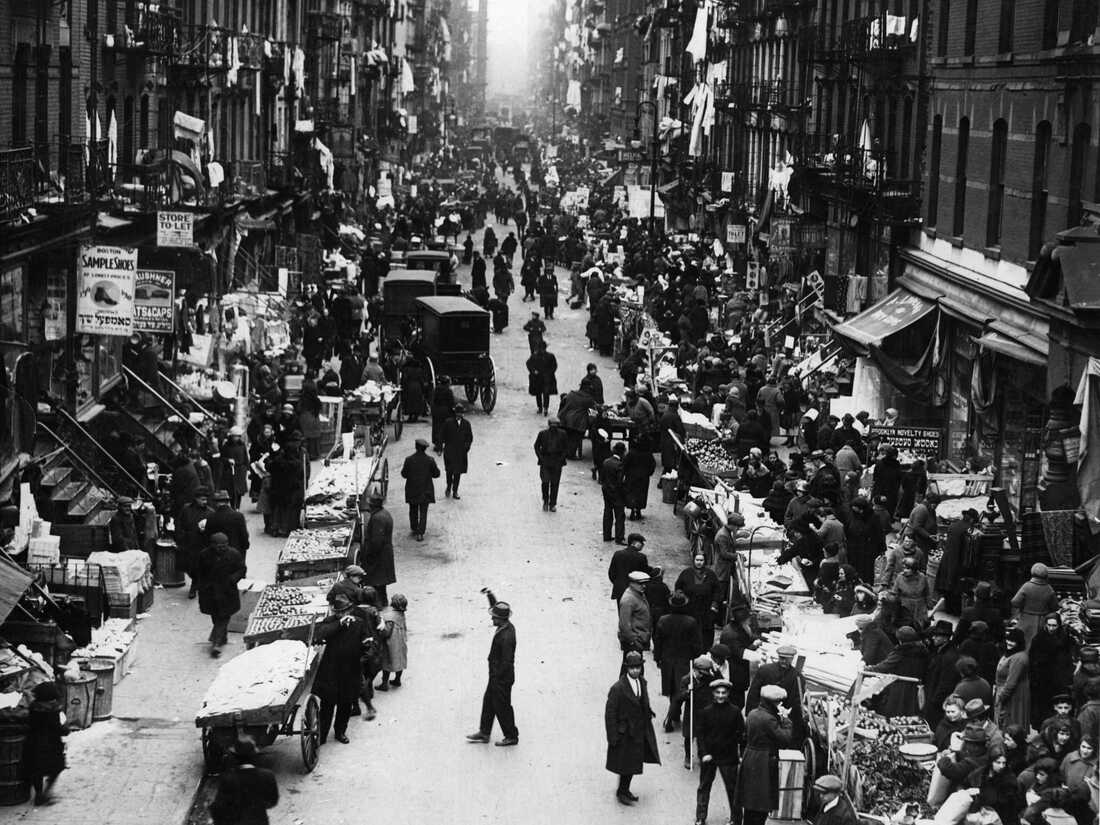Describe the Living Conditions in the Ghettos
The quarters were extremely crowded and unsanitary. Name countries in Eastern and Central Europe where the Nazis established ghettos.

Conditions Inside The Warsaw Ghetto The Holocaust Explained Designed For Schools
While Ghetto inhabitants tried to sustain a certain degree of normalcy in their lives through cultural and social activities living conditions were terrible and thousands died from hunger and disease.

. -Street cars running through. Its inhabitants were forced to live on 180 grams of bread a day 220 grams of sugar a month 1 kg. There were three types of ghettos.
Living conditions were miserable. Describe what life was like for Jews imprisoned in ghettos with particular emphasis on. -Key industrial center for Poland because there was a large focus on working.
Some examples of such Nazi ghettos include the Warsaw Ghetto which was the largest of its kind during World War II and had a peak population of 450000 people. This is partly a statistical phenomenon. 2 Smuggling of food and medicinea lifeline for other ghettoswas nearly impossible in Łódź.
Jews from other districts of Warsaw as well as those from other cities were allowed to bring only the absolute minimum with them usually personal belongings and bedclothes. -In Poland barbed wire fences. In early 1942 a young girl living in the Łódź ghetto.
Density of population was extreme there were 146000 people per square kilometre which meant 8 to 10 people per room on average. In the Łódź ghetto located in a part of Poland that had been incorporated into the German Reich residents were particularly isolated from the surrounding population and had to exist on the small rations provided by the Germans. The inner city which once might have looked like a promised land doesnt much resemble one today.
The living conditions in the ghetto were very difficult. During the Holocaust the creation of ghettos was a key step in the Nazi process of. Overcrowded Many diseases Starvation food lines Dirty.
Table of Contents Judenrat Resistance. Jews and other minourity groups were forced into Ghettos. Starvation chronic food and fuel shortages and severe winter weather led to repeated outbreaks of epidemics and to a high mortality rate.
The Germans established at least 1143 ghettos in the occupied eastern territories. Living conditions was varied from camp to camp. Ghetto Conditions The three major problems in Jewish ghettos were overcrowding food shortages and lack of heat.
Starvation chronic shortages of food lack of heat in winter and inadequate municipal services led to frequent outbreaks of epidemics such as dysentery and typhus and to a high mortality rate. Ghettoization however was seen as a temporary situation and in many places the ghettos existed only for a brief time. Jewish ghettos had too many people living in any given area.
Ghettos were often enclosed districts that isolated Jews by separating Jewish communities from the non-Jewish population and from other Jewish communities. Economic conditions in African-American ghettos have deteriorated quite sharply over the past three and a half decades. African American or Latino ghettos do not always contain dilapidated buildings or deteriorating housing projects but may signify home places with an authentic racial identity or soul that yields a desire and yearning for life and the overpowering drive to.
LIVING CONDITIONS IN GHETTOS. -Many factories w forced labor. Living conditions in these ghettos were deplorable with most lacking basic amenities such as food.
In the closed ghettos the living conditions were the worst. It was calculated that the officially supplied rations did not. Students investigate the conditions in ghettos and how those conditions severely limited Jewish life and led to immense suffering.
In Warsaw Poland 30. Using primary source material students discover that despite severe overcrowding starvation disease and grief Jews still did their utmost to conduct their lives and retain their human dignity. Ghettos were extremely crowded and unsanitary.
Students will also learn about the conditions in most ghettos and how those conditions severely limited Jewish life and led to feelings of humiliation and loss of dignity. Describe The Inhumane Conditions In The Ghettos. In camps such as Auschwitz There was one narrow bunkbed that fit one person.
Leaving these Nazi ghettos was forbidden and captured escapees being executed. They are not allowed to possess. Ghettos were located in Poland the Soviet Union Holland Hungary Greece and Czechoslovakia.
COMPARISON OF DIFFERENT GHETTOS. Of jam and 1 kg. Families who were used to having enough space for everyone are crammed together in small apartments in the ghettos.
Smuggling began at the very moment that the Jewish area of residence was established.

Lodz Ghetto United States Holocaust Memorial Museum

Life In The Ghettos Holocaust Encyclopedia

Conditions Inside The Warsaw Ghetto The Holocaust Explained Designed For Schools

Conditions Inside The Warsaw Ghetto The Holocaust Explained Designed For Schools

The Warsaw Ghetto Beat Back Typhus There Are Lessons For Today S Pandemic Goats And Soda Npr

Daily Life In The Ghettos The Holocaust Explained Designed For Schools

The Warsaw Ghetto Beat Back Typhus There Are Lessons For Today S Pandemic Goats And Soda Npr

Ghettos In The Holocaust Imperial War Museums

Segregated From Its History How Ghetto Lost Its Meaning Code Switch Npr
No comments for "Describe the Living Conditions in the Ghettos"
Post a Comment